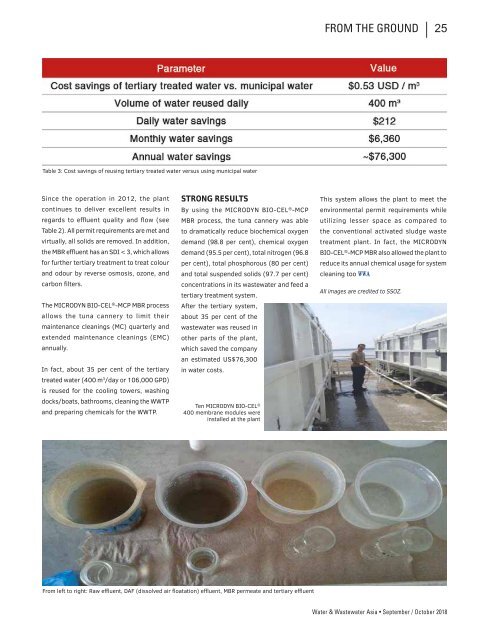Water & Wastewater Asia September/October 2018
Water & Wastewater Asia is an expert source of industry information, cementing its position as an indispensable tool for trade professionals in the water and wastewater industry. As the most reliable publication in the region, industry experts turn this premium journal for credible journalism and exclusive insight provided by fellow industry professionals. Water & Wastewater Asia incorporates the official newsletter of the Singapore Water Association (SWA).
Water & Wastewater Asia is an expert source of industry information, cementing its position as an indispensable tool for trade professionals in the water and wastewater industry. As the most reliable publication in the region, industry experts turn this premium journal for credible journalism and exclusive insight provided by fellow industry professionals. Water & Wastewater Asia incorporates the official newsletter of the Singapore Water Association (SWA).
- No tags were found...
You also want an ePaper? Increase the reach of your titles
YUMPU automatically turns print PDFs into web optimized ePapers that Google loves.
FROM THE GROUND | 25<br />
Table 3: Cost savings of reusing tertiary treated water versus using municipal water<br />
Since the operation in 2012, the plant<br />
continues to deliver excellent results in<br />
regards to effluent quality and flow (see<br />
Table 2). All permit requirements are met and<br />
virtually, all solids are removed. In addition,<br />
the MBR effluent has an SDI < 3, which allows<br />
for further tertiary treatment to treat colour<br />
and odour by reverse osmosis, ozone, and<br />
carbon filters.<br />
The MICRODYN BIO-CEL ® -MCP MBR process<br />
allows the tuna cannery to limit their<br />
maintenance cleanings (MC) quarterly and<br />
extended maintenance cleanings (EMC)<br />
annually.<br />
In fact, about 35 per cent of the tertiary<br />
treated water (400 m 3 /day or 106,000 GPD)<br />
is reused for the cooling towers, washing<br />
docks/boats, bathrooms, cleaning the WWTP<br />
and preparing chemicals for the WWTP.<br />
STRONG RESULTS<br />
By using the MICRODYN BIO-CEL ® -MCP<br />
MBR process, the tuna cannery was able<br />
to dramatically reduce biochemical oxygen<br />
demand (98.8 per cent), chemical oxygen<br />
demand (95.5 per cent), total nitrogen (96.8<br />
per cent), total phosphorous (80 per cent)<br />
and total suspended solids (97.7 per cent)<br />
concentrations in its wastewater and feed a<br />
tertiary treatment system.<br />
After the tertiary system,<br />
about 35 per cent of the<br />
wastewater was reused in<br />
other parts of the plant,<br />
which saved the company<br />
an estimated US$76,300<br />
in water costs.<br />
Ten MICRODYN BIO-CEL ®<br />
400 membrane modules were<br />
installed at the plant<br />
This system allows the plant to meet the<br />
environmental permit requirements while<br />
utilizing lesser space as compared to<br />
the conventional activated sludge waste<br />
treatment plant. In fact, the MICRODYN<br />
BIO-CEL ® -MCP MBR also allowed the plant to<br />
reduce its annual chemical usage for system<br />
cleaning too WWA<br />
All images are credited to SSOZ.<br />
From left to right: Raw effluent, DAF (dissolved air floatation) effluent, MBR permeate and tertiary effluent<br />
<strong>Water</strong> & <strong>Wastewater</strong> <strong>Asia</strong> • <strong>September</strong> / <strong>October</strong> <strong>2018</strong>


















